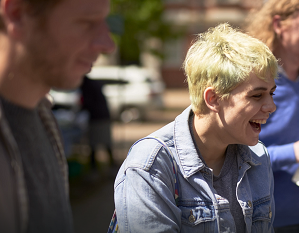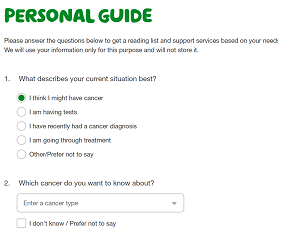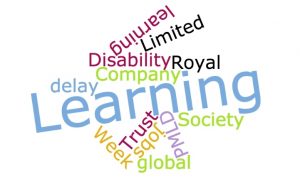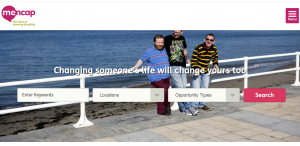I have more than 10 years’ experience working in dynamic, fast-paced business environments producing high quality, accessible digital content. See examples of my copywriting, editing and project management work, and find out more about my approach to digital.
My digital principles
Strong, well-reasoned and logical decisions hold the key to success in digital. Achieving success means demonstrably understanding your audience and their needs. Digital is a continual process of evolution and change. By adapting to new technologies and discovering new insights about your users you can continue to best serve their needs.
Below are some of the guiding principles I use to ensure continued success and high-quality digital work.
I’m unashamedly a digital generalist. I love the interconnected nature of digital. A thorough grounding in analytics can help uncover findings which trigger strong creative ideas. These can be expressed through elegant content and design. Excelling in every discipline is not possible. But a person’s digital skills are weakened greatly if their knowledge gaps impede their ability to make informed decisions. Understanding the individual pieces is what helps you to see the whole.
Digital first
We’re all digital natives now, living vast swathes of our life online from morning to night. And beyond our conscious thoughts too. We even use digital apps to help us sleep! In our own way, we all know whether a digital product or service is good, bad or indifferent. There’s no reason why digital can’t be in the DNA of nearly all organisational goals or priorities. The key to achieving this lies in understanding objectives, knowing your audience’s motivations, and continually adapting to changing scenarios.
More fact, less opinion
Identifying strong qualitative and quantitative evidence and being led by sound reasoning is vital to making correct decisions. The alternative is to wade aimlessly through projects in the vague hope of being gifted a digital epiphany. Facts shouldn’t be read blindly, but ignoring logical conclusions in favour of the HIPPO (Highest Paid Person’s Opinion) should be resisted. No matter what the pay grade of the person signing off on a project, the facts are what matters most.
You can’t manage what you can’t measure
Digital isn’t just about achieving goals, it’s about identifying whether you have the right ones and to do so meaningfully. Digital activities which aren’t able to be measured robustly should be treated with suspicion. If you can’t effectively identify the right things to measure and understand their impact, you can’t claim their success. You can’t adapt your tactics if you do not know the impact of your activity in the first place.
Analysis is nothing without creation
All the analytics reports and GA4 insights in the world won’t give you intelligent digital content unless you implement your findings. I resist measuring digital activity just for the sake of doing so. The end goal is a successful outcome, the vehicle for this is your digital product. Analysis is not the product; it’s the map to help you reach your destination.
Digital is for everyone
That means everyone. There’s an estimated 1.3 billion people in the world who are disabled according to the World Health Organisation, and 16 million alone in the UK. Accessibility should always be built-in to digital work from the outset, particularly the readability of content. It should never be a retro-fitted as an afterthought. If your audience cannot understand your words, or your design impedes them, then you have created digital barriers for them. But accessible content and design benefits everyone, no matter what their situation.
See my CV and full skill set here.
Portfolio
Macmillan’s tone of voice refresh
 Using in-depth qualitative and quantitative analysis of opinions and perceptions of the Macmillan brand, I helped develop, write and enforce new tone of voice guidelines and principles. The work included writing instructive, illustrative guides and resources. These helped convey what users wanted from the Macmillan brand and influenced how we wrote things and why.
Using in-depth qualitative and quantitative analysis of opinions and perceptions of the Macmillan brand, I helped develop, write and enforce new tone of voice guidelines and principles. The work included writing instructive, illustrative guides and resources. These helped convey what users wanted from the Macmillan brand and influenced how we wrote things and why.
Macmillan’s style guide relaunch
 I co-led the relaunch of the Macmillan style guide to make it a more cohesive, consistent and easier to use resource for content writers. The work included in-depth research and surveys to capture thoughts, ideas and points of pain for style for content writers. I worked methodically with key stakeholders to produce a chaptered guide which was a single source of truth. There was an Important focus on accessibility and inclusive writing to ensure it was reflective of the organisation’s values.
I co-led the relaunch of the Macmillan style guide to make it a more cohesive, consistent and easier to use resource for content writers. The work included in-depth research and surveys to capture thoughts, ideas and points of pain for style for content writers. I worked methodically with key stakeholders to produce a chaptered guide which was a single source of truth. There was an Important focus on accessibility and inclusive writing to ensure it was reflective of the organisation’s values.
Providing personalised cancer information for patients

I worked with the Cancer Information Team at Macmillan to create The Macmillan Personal Guide tool, which enables website visitors to access personalised cancer information specific to their time of need. Users are invited to answer four quick questions relating to their current situation. For example; awaiting test results, just been diagnosed, in treatment etc. The type of cancer they have, their work situation, and whether they have children. From the responses, the user then sees personalised text fragments in a results page. This steers them towards the most appropriate support.
People who have received a cancer diagnosis often feel overwhelmed at the news and amount of information available online. Providing more tailored information and signposting towards support services helps to produce better outcomes. Deployed in late 2019, the tool has significantly increased the number of people receiving physical, support after diagnosis.
Relaunch of British Heart Foundation’s Healthcare Professionals content

I collaborated closely with British Heart Foundation’s Healthcare Professionals team to relaunch their website content following an in-depth strategic review. This uncovered fundamental issues preventing the user group from completing tasks on the website. This was achieved through analysis of Google Analytics stats and user feedback. By conducting a Treejack survey and agreeing a new taxonomy, the website section was reordered through a new information architecture. This helped produce higher engagement levels, increased conversions, and better all-around user experience.
British Heart Foundation Google Grants

I was tasked with producing higher engagement and performance for British Heart Foundation’s Google Grants Pro account. I overhauled the account structure and keyword bidding strategy. By collaborating with content teams to improve conversion rates for key user journeys. I also produced tailored reports through DataStudio and DoubleClick’s Executive Reports. These continuously monitored and compared performance to improve outcomes over time. These methods helped produce 10%+ Click Through Rates and significant increases in meaningful conversions year-on-year.
Relaunch of the Mencap website
The Mencap website relaunched in Drupal 8 in June 2016 after a 12-month long gestation period. I supported the business case for the new website, and was involved in co-coordinating the content migration plan, information architecture, user experience, user testing, and eventual roll out of the mobile optimised site. The site grows in strength and influence, providing a free must-have resource for people with a learning disability, their families and carers.
Relaunch of the Mencap recruitment microsite
The previous Mencap recruitment portal was ageing, had a poor user experience and high drop off rate for people completing applications. The site was relaunched in October 2015 and now processes tens of thousands of applications a year. These have a a much higher conversion rate. I worked on briefing for the design, user testing and overall user journey to create a better user experience.
Launch of the Rebuilding Shattered Lives microsite
The homelessness charity St Mungo’s launched a campaign to address the serious issue of women’s homelessness. Many women who become homeless on average stay homeless longer than men. I worked on the launch of the microsite which was an evidence gathering tool for professionals to submit best practice. The results were turned into a campaigning report to help mend the lives of women affected by homelessness.
Learning Disability Week
Learning Disability Week is the national week for learning disability issues. I project managed the content gathering, editing and publishing of content for 2014-16. Each year more successful than the last from a digital engagement point of view. The focus was to find strong stories and imagery to support the week’s aims. I also coordinated digital efforts across the organisation to raise awareness.
Google GrantsPro application

Mencap had a Google Grants account with an aspiration to achieve GrantsPro status by reaching the required 2% Click Through Rate across all campaign activities. I managed the Google Grants account, with support from an agency, to pause under-performing activity. I also poured resource into optimising successful campaigns and ensuring keyword opportunities were maximised. After writing the application, Mencap passed the application process first time in October 2015.



